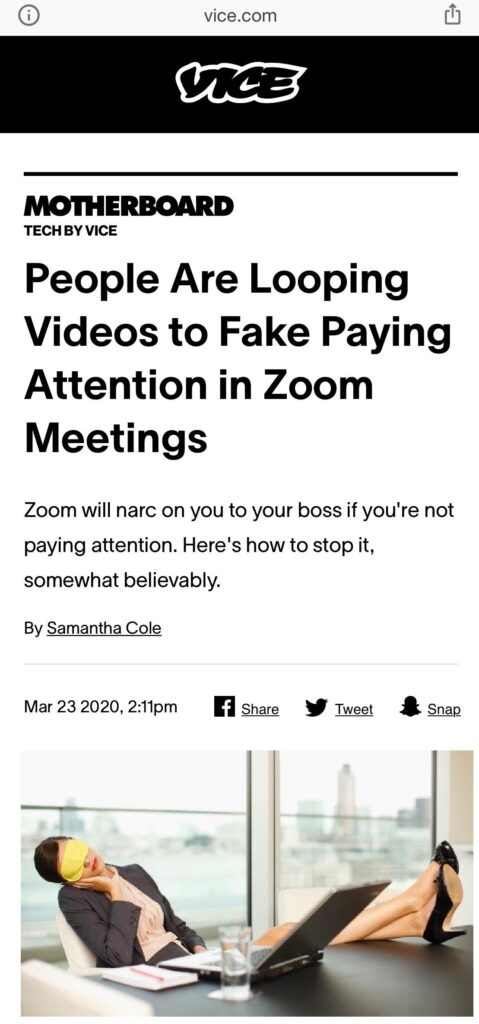Attendance in the conventional F2F classroom is already complicated since physically present does not equal to mentally engaged. Attendance becomes even more challenging to define in a hybrid course where students could be choosing to “attend” class by actively participating in a synchronous video conference with the camera on, viewing the video conference in real time with the mic and camera off, or watching the recording on their own. Of course, there is always the classic question asked by many students of whether forum discussions count as “homework for marks” or “just participation.”
In a hybrid class, it is important to openly discuss right from the start what attendance means. Communicating expectations right from the start is crucial for trust-building. Equally important, an open conversation provides students the opportunity to think about why attendance should matter to themselves, not just to the teacher.
Here’s the lesson plan I will be using on day one of Fall 2021 when I teach the hybrid version of the academic writing course at KPU.
BRIDGE-IN
Students will click on Check-in image on Moodle to access the forum for their Week Zero activity.

Source: https://unsplash.com/photos/MQWc4I9VuTc
The discussion forum will show screenshot of a funny news from the early pandemic days about faking attendance on Zoom. The forum will invite the students to post their thoughts as a way of checking into the course.

Source: https://www.vice.com/en/article/7kzq5x/looping-videos-to-fake-paying-attention-in-zoom-meetings
OBJECTIVE
By the end of the lesson, students will recognize the complexity of attendance in a hybrid course
PRE-ASSESSMENT
Students will answer the question “How can you show attendance in a hybrid class?” as their Week Zero check-in assignment. The forum will be public so that everyone in the class can see all of the posts. The instruction will include a friendly reminder that it’s ok to post “I don’t know” as a legitimate response. The instruction will make it clear that this task should be completed before the first class. The first class can either be F2F or online synchronous.
PARTICIPATORY LEARNING
- Once students meet in person or online on day one, the instructor will acknowledge the validity of different answers by showcasing a few and emphasizing that there is no one right answer.
- The instructor will then show the etymology of the verb “to attend” and give students a minute to silently think about what that means in our modern hybrid classroom.
 Source: https://www.etymonline.com/word/attend
Source: https://www.etymonline.com/word/attend - Give students 2 to 3 minutes to discuss how they can demonstrate evidence of “brain yoga” – that stretching of the mind towards learning – in this class. Remind them that the evidence is not for the instructor. It’s for themselves.
- F2F option – If done in a F2F class, have students form pairs or groups of 3 with people who are nearby.
- Online option – If done in an synchronous session on Big Blue Button, use the Shared Notes function to have everyone anonymously contribute to the whiteboard.
POST-ASSESSMENT
- F2F – have each group share their top 3 tips. Repetitions are ok!
- Online – invite students to add * or ! next to the tips they want to personally adopt.
SUMMARY
The instructor will show the image of Here. There. Everywhere. Briefly state that hybrid learning and hybrid interaction in the modern era challenges our understanding of what it means to be present. Then, the instructor will invite the students to take a moment to make a mental, digital, or physical note of the ways of attending they found relevant to their own learning.

